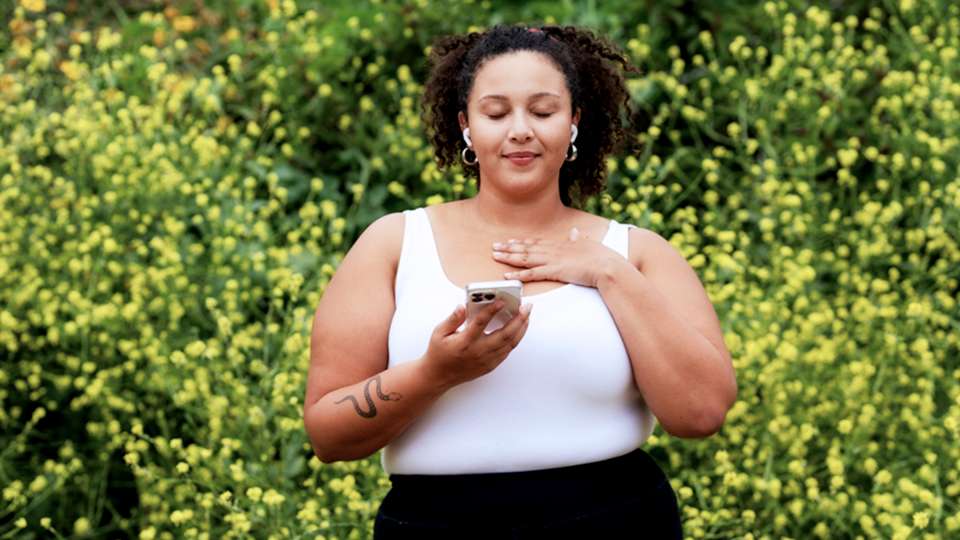
When was the last time you wished something in your life was different? Maybe you wish something terrible in your past had never happened or that you weren’t dealing with so many stressful things in the current moment.
It’s natural and human to feel this way, especially when the experience you wish was different happened against your will. But dwelling too much on the “what-if’s” can inadvertently make someone neglect to process their reality fully — and negatively impact their future.
Enter radical acceptance: The practice of allowing yourself to fully accept the past and present to move on and create a future you want.
What is radical acceptance?
Radical acceptance is a core practice of dialectical behavior therapy (DBT), a type of therapy developed at the University of Washington by Marsha Linehan, professor emeritus of psychology. DBT is traditionally used to treat people with borderline personality disorder, but radical acceptance can be used by anyone who wants to try it.
In this case, “radical” is like the name of the mathematical symbol, which means “at the root.” Radical acceptance is about getting at the root of acceptance, says Vibh Forsythe Cox, a licensed clinical psychologist and director of the Marsha M. Linehan DBT Clinic.
“Radical acceptance is about acknowledging the reality of the present moment, understanding reality as it is without judgment. You can still think about moving toward change,” she explains.
Radical acceptance is not the same as complacency or giving up, and it’s not about resigning yourself to a fate you don’t want.
“Acceptance is not about saying you like or approve of something,” Forsythe Cox says. “I’m a Black woman, so racism is part of my experience in life; radically accepting it is not about giving up, and if I don’t acknowledge the reality that racism exists in the present moment, I might do behaviors that put me in danger. I have to acknowledge it exists so I can make choices that help me get to my goals.”
Likewise, for someone who has experienced trauma, radical acceptance doesn’t mean justifying what happened or what someone did to you — it just means accepting that, however awful, it did happen.
Forsythe Cox likes to ask clients: “What would your behavior look like if you fully acknowledged the impact of what happened to you?” For some people, answering this question may make them realize they need to seek help or that their experiences make them react to things differently than someone who didn’t experience trauma — and that, that is OK.
Why is radical acceptance helpful?
The harsh truth is that pain is part of life; everyone will experience it in some way.
You can’t always prevent bad things from happening, and you can’t make yourself immune to feeling negative emotions, but you can reduce how much you’re suffering — and that’s where radical acceptance comes in.
If you’re pushing back against what happened or is happening, thinking something “should” have gone differently or be different, you’re only increasing your suffering, says Anne Browning, associate dean for well-being at the University of Washington School of Medicine.
“When we take approval out of the picture and just say, ‘I can’t change the past, the present is what it is, I don’t need to like it, I can sit with it,’ there comes a deep sense of calm,” she says. “Even though there can also be painful experiences, there will be less anxious suffering that we spin into.”
Radical acceptance also frees up brain space and energy for you to plan and take steps to make meaningful changes that will positively impact your future.
Tips for practicing radical acceptance
Focus on the present moment
The first step of radical acceptance is recognizing what’s happening now, Forsythe Cox says. Try to do this without judgment, labeling what’s happening in a factual rather than emotional way. You can use this same approach when thinking about past experiences, too.
Learn to recognize your resistant behaviors
Everyone has things they do when they don’t want to accept something. Maybe you think of all the things you could have done differently, or you complain to friends about your misfortune, or you get angry and act rashly.
Identifying what you think, say or do when you’re resisting the reality of the moment can help you learn to recognize those behaviors and counteract them in future moments.
Forsythe Cox uses an example of being stuck in bumper-to-bumper traffic. Your natural reaction in this situation may be to get angry, honk and start stressing out about how late you’ll be. You may start wishing you’d left earlier or wondering why you always have bad luck. But these behaviors and thoughts won’t change the situation and will only make you suffer more.
Instead, think about what things you can do to make the most of the situation, like listening to music or a podcast or calling a friend. Changing your behavior won’t make the traffic jam suddenly clear, but it might help you feel less stressed about it.
Allow yourself to feel negative feelings
As mentioned earlier, radical acceptance isn’t about pretending things are OK when they’re not or about trying to make yourself feel good about a bad situation.
Don’t ignore or try to push away the emotions you’re feeling, however negative they may be. They won’t resolve unless you deal with them — and sometimes they won’t resolve at all, and you’ll have to learn to sit with them and accept them for what they are.
“Emotions are information. Let them come up and see what’s serving us and what’s not,” Browning says.
Fake it until you make it
One counterintuitive way to practice radical acceptance is to pretend like you’re already doing it. Have an internal dialogue with yourself as though you’ve already accepted the thing you are having trouble accepting.
This may be jarring at first, Browning notes, and that’s OK. Go along with it, accepting whatever emotions come. What would it feel like if you accepted things just as they are? How might your behavior be different? How might your emotions be different?
Doing this once may not do much to set you on the path toward acceptance — you may have to try it several times, especially if the thing you aren’t accepting is particularly difficult or upsetting.
Sometimes, even shifting your behavior or body language toward acceptance can help if your mind isn’t there yet. This can be something small like smiling or laughing even when you don’t feel like it.
“We think our mind drives our physiology, but our physiology can drive our mind,” Browning says, “If your mind is stuck, what can you do physiologically to shift your emotional state?”
Recognize and redo the stories you tell yourself
We all tell stories about ourselves, in our heads and to others, and society and the people in our lives tell (sometimes diverging) stories about us, too.
Maybe one of your stories is that, since you have social anxiety, you aren’t good at making new friends, or that after the loss of a loved one you will never heal. Or maybe if you are different from the people around you in some way, you buy into others’ prejudiced beliefs that something is wrong with you.
Not all stories we tell ourselves are helpful, and sometimes they reflect skewed perceptions rather than the reality of ourselves or our lives.
“Memory is wildly fallible. Every time we think about a past event, our memory shifts and evolves, depending on our state of being when we’re re-remembering something,” Browning says. “My attempt to practice radical acceptance has highlighted how often we make up stories that can reinterpret facts to serve a present that may not be serving us.”
In other words, when you’re in a bad mood, thinking about an experience that didn’t go so well may make the memory seem worse than it felt at the time; on the flip side, if you’re in a good mood, you may view the memory less negatively.
Browning likes to keep a journal where she writes down good and difficult things that have happened to her in factual language. Then, when she’s feeling more emotional about something, she’ll read her past entries and notice the differences in how she feels in the moment and how she portrayed the experience initially.
Practice to make it easier
The expression “practice makes perfect” doesn’t apply here, because no one will ever be perfect at accepting things they wish were different (no, not even professionals like Forsythe Cox and Browning).
The good thing about radical acceptance is that you can practice it for small and big difficulties. It’s a good idea to try it during minor inconveniences when it’s easier to get a feel for the practice.
“It’s like running. You can use running anytime; you can do it when you’re late, when you want exercise or when a tsunami hits Seattle. But you don’t want to start running for the first time when it’s time to run for your life,” Forsythe Cox says. “It’s better to notice small times you could do it in daily life. That makes it easier when something huge and scary happens.”
Like other skills that are rooted in mindfulness, radical acceptance isn’t easy; you can’t just turn a switch on and suddenly be good at it. But the more you practice, the more you will develop a skill you can use to help reduce suffering and focus on experiencing life fully.

 Healthy ideas for your inbox
Healthy ideas for your inbox





